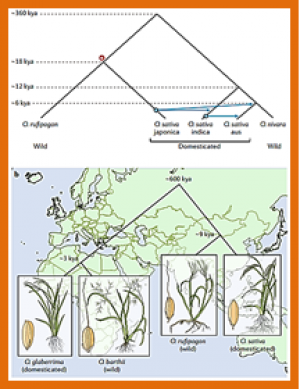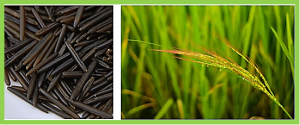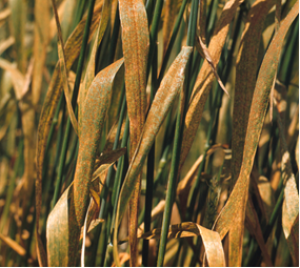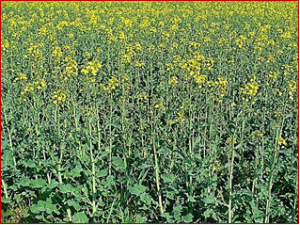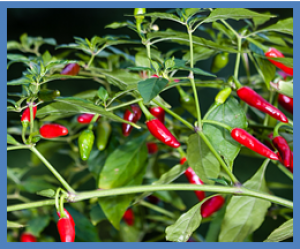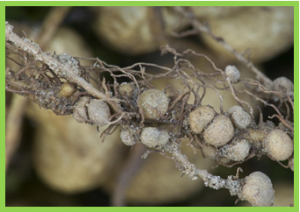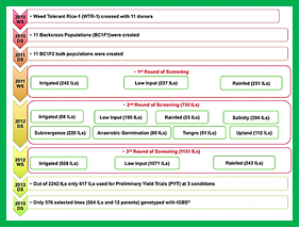Seed vigor is an imperative trait for the direct seeding of rice. Isopropylmalate synthase (IPMS) catalyzes the committed step of leucine (Leu) biosynthesis, but its effect on seed vigor remains unclear. In this study, rice OsIPMS1 and OsIPMS2 was cloned, and the roles of OsIPMS1 in seed vigor were mainly investigated. OsIPMS1 and OsIPMS2 catalyze Leu biosynthesis, and Leu feedback inhibits their IPMS activities.
Numerous regulatory genes participate in plant thermotolerance. In Arabidopsis, HEAT-INDUCED TAS1 TARGET2 (HTT2) is an important thermotolerance gene that is silenced by ta-siR255, a trans-acting siRNA. ta-siR255 is absent from heading Chinese cabbage (Brassica rapa ssp. pekinensis). Our previous attempt to overexpress the endogenous BrpHTT2 gene of heading Chinese cabbage (B. rapa ssp. pekinensis) failed because of cosuppression
Rice is a staple crop for half the world’s population, which is expected to grow by 3 billion over the next 30 years. It is also a key model for studying the genomics of agroecosystems. This dual role places rice at the centre of an enormous challenge facing agriculture: how to leverage genomics to produce enough food to feed an expanding global population. Scientists worldwide are investigating the genetic variation among domesticated rice species and their wild relatives with the aim of identifying loci that can be exploited to breed a new generation of sustainable crops known as Green Super Rice.
Grain length is an important trait for yield and commercial value in rice. Wild rice seeds have a very slender shape and have many desirable genes that have been lost in cultivated rice during domestication. In this study, we identified a quantitative trait locus, qGL12.2, which controls grain length in wild rice. First, a wild rice chromosome segment substitution line, CSSL41, was selected that has longer glume and grains than does the Oryza sativa indica cultivar, 9311.
Bio-fortification of maize with elevated Zinc (Zn) and Iron (Fe) holds considerable promise for alleviating under-nutrition among the world’s poor. Bio-fortification through molecular breeding could be an economical strategy for developing nutritious maize, and hence in this study, we adopted GWAS to identify markers associated with high kernel-Zn and Fe in maize and subsequently validated marker-trait associations in independent bi-parental populations.
Leaf rust (LR), stripe rust (YR) and tan spot (TS) are some of the important foliar diseases in wheat (Triticum aestivum L.). To identify candidate resistance genes for these diseases in CIMMYT’s (International Maize and Wheat Improvement Center) International bread wheat screening nurseries, we used genome-wide association studies (GWAS) in conjunction with information from the population sequencing map and Ensembl plants.
Lodging is a persistent problem which severely reduce yield and impair seed quality in rapeseed (Brassica napus L.). Enhancing stem strength (SS) has proven to be an effective approach to decrease lodging risk. In the present study, four interrelated stem lodging-related traits, including stem breaking resistance (SBR), stem diameter (SD), SS, and lodging coefficient (LC), were investigated among 472 rapeseed accessions.
This study, for the first time, evaluates the efficiency of castor oil when used as an external coating on Capsicum annuum L., to increase postharvest storage-life at 4 ± 1 °C. The castor oil-coated fruits were successfully stored for 36 days, while the non-coated fruits could only sustain for 18 days. Throughout the storage period (at 9-day intervals), different antioxidants and biochemical assays (allied with storage) such as titratable acidity, ascorbic acid content, ferrous ion chelating activity, reducing power,
The identification of locally-adapted rhizobia for effective inoculation of grain legumes in Africa's semiarid regions is strategic for developing and optimizing cheap nitrogen fixation technologies for smallholder farmers. This study was aimed at selecting and characterising effective native rhizobia, from Ghanaian soils for groundnut (Arachis hypogaea L.) inoculation.
This study demonstrates genotyping-by-sequencing-based single-nucleotide polymorphism (SNP)-typing in 11 early-backcross introgression populations of rice (at BC1F5), comprising a set of 564 diverse introgression lines and 12 parents. Sequencing using 10 Ion Proton runs generated a total of ∼943.4 million raw reads, out of which ∼881.6 million reads remained after trimming for low-quality bases. After alignment, 794,297 polymorphic SNPs were identified,


 Curently online :
Curently online :
 Total visitors :
Total visitors :


